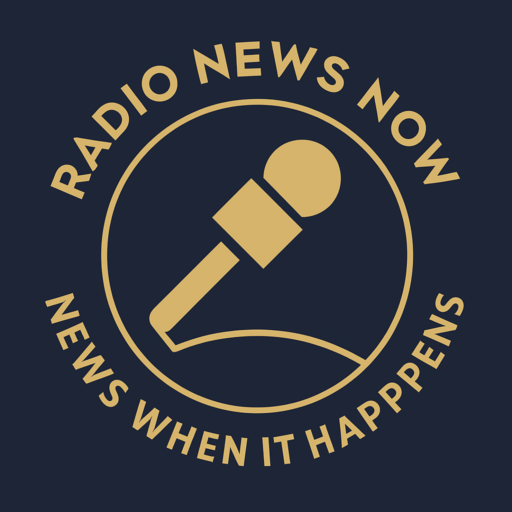By Lee Michaels – Radio News Now
Published: July 09, 2025

Not long ago, building a radio playlist was a deeply human process. A music director would dig through record pools, consult charts, talk to promo reps, and lean into gut instinct to craft a day’s worth of rotations.
Today, the role of the curator hasn’t disappeared — but it’s changed dramatically.
Welcome to the AI era of radio programming, where algorithms, predictive analytics, and listener data work alongside traditional programming instincts to shape what comes out of the speakers — and why.
Let’s take a look behind the curtain at how playlists are really being built in 2025.
🤖 AI + Human = The New Programming Model
Rather than replacing program directors, AI has become a powerful assistant, helping them:
- Identify song performance trends in real time
- Predict which tracks will resonate with specific demographics
- Balance tempo, genre, and artist separation
- Optimize time-of-day rotations
- Suggest underperforming songs to pull or trending ones to add
“AI doesn’t pick the music for us — it helps us understand what the music is doing,” says Jennifer Ortiz, Program Director at an iHeart AC station in Phoenix.
🎚️ What Does AI Playlist Curation Actually Involve?
AI-driven playlist tools process massive amounts of data from:
- Streaming trends (Spotify, Apple Music, YouTube)
- Social media activity (TikTok, Instagram Reels)
- Shazam lookups
- Listener retention (measured via PPM or digital stream data)
- Historical airplay success
- Acoustic properties (tempo, key, energy, danceability)
Tools like MusicMaster’s OptiTrack, GSelector (RCS), and Songmonkey AI provide dashboards with recommendations like:
✅ “Add this track to midday rotation — trending 22% with 35–44 females”
⚠️ “Drop this ballad — bounce rate up 11% in morning drive”
🎯 “Try this remix at night — high Shazam activity in your ZIPs”
📻 Examples of AI Integration in Major Markets
🎧 Audacy (New York)
Uses machine learning to analyze on-air reactions to new music. Their hot AC stations test titles faster and with geo-targeted AI polling built into streaming apps.
📡 iHeartMedia
Has a proprietary system called SmartScheduler, which combines listener data, chart metrics, and DJ input to propose playlists that adjust dynamically to market shifts.
🌐 Independent Stations
Even small-market or college stations now use affordable tools like Sociopal or Radiant AI, letting them blend curator personality with data-backed discovery.
“We still program with heart — but now we also program with proof,” said Marcus Leach of KJZZ 105.9 in Seattle.
🔄 AI vs. Traditional Playlist Testing
In the past, stations relied heavily on:
- Callout research (phone surveys about new songs)
- Music test rooms (where listeners rate hooks in person)
- Weekly charts (Billboard, Mediabase)
- Gut feel and local buzz
Today, those tools are still in use — but are supplemented (or in some markets, supplanted) by:
- Real-time streaming data
- A/B testing intros on social platforms
- Regional TikTok engagement
- Heatmaps of digital listener reaction
AI crunches data faster than humans can sort spreadsheets — allowing programmers to respond to the audience before the ratings drop.
🎙️ What Can’t AI Do (Yet)?
Despite the power of automation, humans are still vital to radio curation because:
- AI doesn’t understand local culture or breaking news
- It can’t read between the lines of artist interviews, controversies, or tour announcements
- It lacks emotional intuition — it knows “what’s hot,” not “why it matters”
- AI won’t take a stand on an emerging artist without data — a bold programmer will
“A computer didn’t discover Billie Eilish or Jelly Roll — a person did. That gut instinct still matters,” notes music veteran Dave Stiles.
🧠 Ethics & Challenges Ahead
AI can surface hits. But it also raises concerns:
- Bias in training data (if all inputs are Top 40, genre diversity shrinks)
- Homogenization of playlists (stations sound too similar)
- Over-reliance can stifle risk-taking and discovery
Some stations now use “diversity logic filters” to ensure genre, gender, and tempo variety remain in balance — even when driven by AI inputs.
🔊 Final Takeaway
Radio is not being replaced by machines. It’s being recalibrated by them.
AI is helping programmers work smarter, react faster, and keep up with the breakneck pace of music consumption in 2025. But at the core, the most successful stations still have a voice, a vibe, and a vision — and that can’t be coded.
The future of playlist curation is not AI vs. humans — it’s AI with humans who know how to program for people.
What’s your station using to build playlists in 2025?
Tag us at #RadioNewsNow or comment below. We may feature your curation strategy in our upcoming “Inside the PD’s Office” feature.
— Lee Michaels
Founder, Radio News Now
